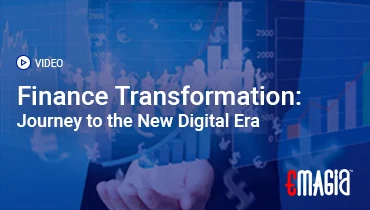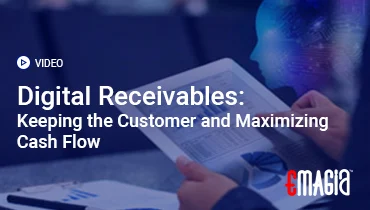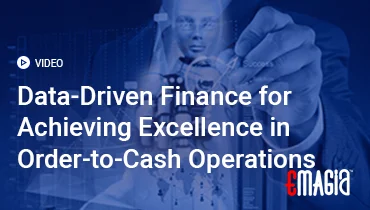In the digital age, the financial industry is undergoing a transformative shift, with automated credit scoring software at the forefront. These advanced systems leverage artificial intelligence (AI), machine learning (ML), and big data analytics to assess creditworthiness, offering a more efficient and accurate alternative to traditional credit evaluation methods. This comprehensive guide delves into the intricacies of automated credit scoring software, exploring its components, benefits, challenges, and the future landscape of credit assessment.
1. An Overview of Automated Credit Scoring Systems
1.1 Defining Automated Credit Scoring Solutions?
Automated credit scoring software refers to digital platforms that utilize algorithms and data analytics to evaluate an individual’s or business’s creditworthiness. Unlike manual assessments, these systems process vast amounts of data swiftly, providing real-time credit decisions.
1.2 Evolution from Traditional to Automated Systems
Historically, credit assessments relied heavily on manual processes and limited data points. The advent of technology introduced automated systems that incorporate diverse data sources, enhancing accuracy and efficiency in credit evaluations.
1.3 Key Components of Automated Credit Scoring Software
- Data Integration: Aggregating information from various sources, including credit bureaus, financial institutions, and alternative data providers.
- Scoring Algorithms: Employing data-driven algorithms and machine learning techniques to estimate the likelihood of credit default.
- Decision Engines: Applying business rules and policies to determine credit outcomes.
- User Interfaces: Providing dashboards and tools for users to interact with the system.
2. Core Technologies in Automated Credit Scoring
2.1 Artificial Intelligence and Machine Learning
AI and ML algorithms analyze patterns in data to predict credit behavior, continuously learning and improving over time.
2.2 Big Data Analytics
Examining large-scale structured and unstructured data enables a more thorough and precise assessment of an individual’s or business’s credit reliability.
2.3 Cloud Computing
Cloud-based solutions offer scalability, flexibility, and accessibility, allowing institutions to manage credit assessments efficiently.
2.4 API Integrations
Application Programming Interfaces (APIs) facilitate seamless communication between the credit scoring software and external data sources or internal systems.
3. Benefits of Implementing Automated Credit Scoring Software
3.1 Enhanced Accuracy
Automated systems reduce human errors and biases, leading to more precise credit evaluations.
3.2 Increased Efficiency
Instant data processing speeds up credit evaluations, leading to better customer experiences and enhanced business efficiency.
3.3 Scalability
These systems can handle growing volumes of credit applications without compromising performance.
3.4 Cost Reduction
Automation minimizes the need for extensive manual labor, reducing operational costs.
3.5 Improved Compliance
Automated tracking and documentation assist in adhering to regulatory requirements.
4. Challenges and Considerations
4.1 Data Privacy and Security
Handling sensitive financial data necessitates robust security measures to protect against breaches and comply with data protection laws.
4.2 Algorithmic Bias
Ensuring fairness in AI models is crucial to prevent discriminatory practices in credit decisions.
4.3 Integration with Legacy Systems
Incorporating new software into existing infrastructures can be complex and may require significant adjustments.
4.4 Regulatory Compliance
Staying abreast of evolving financial regulations is essential to maintain compliance and avoid penalties.
5. Leading Automated Credit Scoring Software Solutions
5.1 FICO
A pioneer in credit scoring, FICO offers advanced analytics and decision management solutions widely used across the financial industry.
5.2 VantageScore
Created by leading credit agencies, VantageScore offers innovative scoring approaches that leverage more diverse data inputs.
5.3 Emagia
Emagia’s AI-powered platform streamlines credit risk management, offering real-time insights and automation to enhance decision-making.
5.4 ACTICO
ACTICO’s platform allows for instant credit assessments while maintaining strong focus on regulatory adherence and effective risk oversight.
5.5 Axe Finance
Axe Finance provides AI-driven underwriting solutions that automate credit assessments, improving speed and accuracy.
5.6 Celusion
Celusion’s Decide platform offers customizable credit decisioning tools, integrating AI for enhanced risk assessment.
5.7 Oscilar
Oscilar’s software emphasizes personalized credit decisions, leveraging data analytics to tailor assessments.
5.8 ACreS
ACreS allows institutions to build and manage their own credit risk models, offering flexibility and control over scoring processes.
6. How Emagia Transforms Credit Risk Management
Emagia stands out in the realm of automated credit scoring by offering a comprehensive, AI-driven platform that revolutionizes credit risk management. Its key features include:
- Real-Time Credit Assessments: Emagia provides instantaneous credit evaluations, enabling businesses to make swift and informed decisions.
- Integration Capabilities: The platform seamlessly integrates with existing ERP systems, ensuring a unified approach to credit management.
- Advanced Analytics: Utilizing AI and machine learning, Emagia delivers predictive insights, enhancing the accuracy of credit risk assessments.
- Global Reach: With multi-language and multi-currency support, Emagia caters to businesses operating in diverse markets.
- Regulatory Compliance: The software ensures adherence to international financial regulations, mitigating compliance risks.
By automating and optimizing credit processes, Emagia empowers organizations to reduce bad debts, accelerate customer onboarding, and enhance overall financial performance.
7. Future Trends in Automated Credit Scoring
7.1 Incorporation of Alternative Data
Leveraging unconventional data like social media behavior and utility bill records is broadening the reach of credit scoring methods of credit assessments.
7.2 Explainable AI
Developing transparent AI models allows stakeholders to understand and trust automated credit decisions.
7.3 Enhanced Personalization
Tailoring credit products to individual customer profiles improves customer satisfaction and loyalty.
7.4 Blockchain Integration
Leveraging blockchain technology can enhance data security and transparency in credit scoring processes.
7.5 Regulatory Evolution
As technology advances, regulatory frameworks are adapting to address new challenges and ensure fair lending practices.
8. Conclusion
Automated credit scoring software is reshaping the financial landscape, offering enhanced accuracy, efficiency, and scalability in credit risk assessment. By embracing these technologies, financial institutions can make more informed decisions, improve customer experiences, and maintain a competitive edge in the evolving market.
FAQs
What is automated credit scoring software?
Automated credit scoring software is a digital tool that uses algorithms and data analytics to evaluate the creditworthiness of individuals or businesses, streamlining the decision-making process.
How does automated credit scoring improve accuracy?
By analyzing vast amounts of data and identifying patterns, automated systems reduce human errors and biases, leading to more precise credit assessments.
Is it possible to connect automated credit scoring tools with current financial infrastructure?
Yes, many solutions offer API integrations that allow seamless incorporation into existing financial infrastructures.
Is data security a concern with automated credit scoring?
Data security is paramount; reputable software providers implement robust measures to protect sensitive information and comply with data protection regulations.
How does Emagia enhance credit risk management?
Emagia utilizes AI and machine learning to provide real-time credit assessments, integrates with existing systems, and ensures compliance with financial regulations, thereby optimizing credit risk management.
What are the future trends in automated credit scoring?
Emerging trends include the use of alternative data sources, development of explainable AI models, increased personalization of credit products, integration of blockchain technology, and evolving regulatory frameworks.
By understanding and leveraging automated credit scoring software, financial institutions can enhance their credit risk management strategies, ensuring more accurate, efficient, and fair lending practices.



